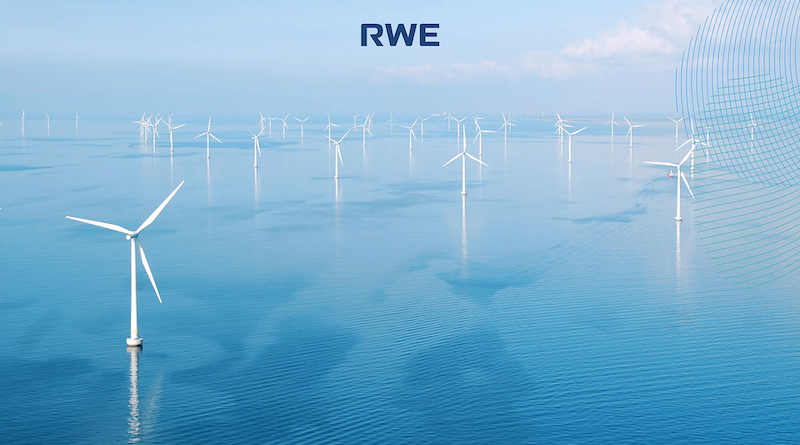
Electricity Market Design: Let’s enable investments in renewables
Standing together in extraordinary circumstances
Extraordinary challenges need extraordinary solutions. Hardly anything has made this as clear as the Russian war of aggression against Ukraine, to which the institutions of the European Union have responded with unprecedented determination. Sanctions that would have been unthinkable before have been taken against Russia – and rightly so. Also, a whole host of emergency measures were implemented in record time to avert the energy supply crisis triggered by the Russian attack.
Filling gas storage facilities, reducing gas consumption, easing state aid rules to allow support for citizens and businesses suffering from soaring prices – all of this was needed. Once again, Europe has proven that cooperation and joint action is the way forward.
Especially in energy policy, a cornerstone of European integration since the beginning, we should continue to look at the commonalities and not so much at the differences. This is even more crucial when it comes to the ongoing reform of the electricity market design: the European single market for electricity is a great achievement – even in tough times electricity was traded and delivered across European borders. Member States supported each other and the efficient allocation helped to ease the price increases as much as possible. Our electricity market should thus be handled with great care and respect. Therefore, the European Commission was right in proposing a very targeted and balanced reform of the market design. The agreement amongst the Energy Ministers in October has now made it possible for the Council and the European Parliament to finalise this reform quickly, thus bringing us a step closer to a successful energy transition in Europe.
A supply shortage, not a failed market design
The consequences of the war of aggression against Ukraine made it abundantly clear to us Europeans how dependent we had been on Russian natural gas. It was the shortage in gas supply, and also unexpected electricity generation shortages in some Member States, that caused the soaring energy prices – not a failed regulatory framework. So, due to insufficient generation capacities, we were and we remain confronted with a supply crisis and not a market design crisis. On the contrary, the electricity wholesale market has proven that it can deliver affordable prices: before the energy crisis last year, we had many years of very low electricity prices. We should keep in mind that this was a result of our integrated and well-functioning European electricity market. There is no need for fundamental changes – we already have a very good market design. Let’s further develop it – first and foremost by enabling investments in new power generation capacity, be it renewable energy or climate neutral firm capacity.
Let’s invest ourselves out of the crisis
The quick and massive build-out of clean generation capacity is the only way to reduce scarcity of electricity and thus ensure affordable prices for households and industry. Huge investments in renewable energy and, in perspective, CO2-free firm capacity are needed to ensure a secure and sustainable electricity supply as well as stable electricity prices for all consumers. To mitigate risks and enable these huge investments, a stable and predictable framework which preserves the fundamentals of liberalised and integrated electricity markets in Europe is required.
The expansion of renewables is the top priority as it is crucial for Europe to achieve its ambitious climate targets. Ramping up renewables is what makes the phaseout of fossil fuels possible in the first place.
But at the same time this does not reduce the need to maintain sufficient firm electricity generation capacities at all times for when the wind is not blowing and the sun is not shining. All the more so in view of the growing demand for electricity. In some Member States which evolve to a more and more renewables-based energy system, having firm capacity requires building highly modern power plants that react particularly flexibly to demand and are operated with hydrogen or can at least be converted to hydrogen firing easily.
Key requirements for a future-proof market design
Against this background, the ongoing reform of the electricity market design tackles the right issues: protecting consumers on the one hand, while facilitating new investments on the other. The Commission’s proposal as well as many compromises that are emerging in the amendments of the Council of Ministers and the European Parliament will further improve the regulatory framework. In light of the ongoing negotiations of the legislators, the following elements are key:
– In order to accelerate the expansion of renewables, both the merchant route via Power Purchase Agreements (PPAs) and direct support via two-sided Contracts for Difference (CfDs) are needed. CfDs are an appropriate and well proven instrument that protect the developer of renewable projects against low electricity prices and at the same time private and industrial consumers against high electricity prices. It is thus right to make two-sided CfDs the standard instrument for direct public support for the new-build of renewables in Europe. However, many Member States already have other support instruments in place for at least parts of their renewables build-out. Auctions and other financing rounds for renewables are often planned well in advance. To avoid disruptions that could create uncertainty for investors, the future EU rules should allow for a transitional period of up to three years to switch all renewables support schemes to two-sided CfDs.
– Only Capacity Remuneration Mechanisms (CRM) – payments for ensuring power plants are available – ensure sufficient and timely investments in firm and flexible capacity. Therefore, CRMs should become a structural feature of the electricity market design as soon as possible.
– Revenue caps for so-called inframarginal technologies – mainly renewable capacities – were designed and implemented in an extraordinary emergency situation. Such an instrument – even just as an option with a clear end date – should not form part of the market design. Revenue caps create uncertainty for investors and will harm the further deployment of renewables, instead of promoting it.
– Interventions in short-term electricity trading should be avoided. Namely, requests for information for the day-ahead and intraday markets at the level of generation units should be evaluated with great caution: this could lead to the implementation of unit-based bidding and would lead to further complexity for all market participants. Without there being any evidence of benefits of such an instrument, this could have a counterproductive effect by curtailing liquidity.
– Also, mandating the introduction of so-called regional virtual hubs in Europe does not appear to address the needs of market participants. It will at best have no effect but at worst could cause a reduction in liquidity on the existing hubs. Parliament and the Council are right to ask for an impact assessment before introducing regional virtual hubs. Such a verification has to be carried out in an open-ended process without pre-establishing the introduction of such a far-reaching change.
– A special regime is required to unleash the huge potential of offshore wind that Europe has in the North and Baltic Seas. Offshore hybrid wind farms that are connected to more than one Member State face additional financial risks when their ability to export electricity is limited by the Transmission System Operator for reasons wind farm operators cannot manage or anticipate, e.g. structural congestion on the onshore grid. Therefore, we need an effective compensation mechanism to mitigate this unmanageable risk. The Transmission Access Guarantees proposed by the Commission and supported by both the Council and Parliament could provide adequate risk mitigation if the Council and Parliament further fine tune the effectiveness of the design.
Don’t forget: grid expansion and healthy supply chains
At RWE we are fully committed to develop in line with the European Green Deal and within an even better EU Electricity Market Design: RWE will be climate-neutral by 2040. With our investment and growth strategy ‘Growing Green’, we will be investing billions in the years to come in offshore and onshore wind, solar, batteries, flexible generation, and hydrogen.
So yes, we are accelerating the expansion of renewables. However, we also need to accelerate the modernisation and expansion of our grid infrastructure.
There is a real risk that grid capacity will become more and more of a bottleneck in the coming years. Electricity demand will rise due to increasing electrification. We need to ensure that green electricity can be delivered across the continent – from North to South, from East to West.
Everyone needs access to offshore wind, and the grid must be able to handle a huge share of intermittent renewable energy.
And there is another risk to be tackled: the supply chain for renewables is in a critical condition. The European wind manufacturers are struggling, while for Solar PV we have depended on third countries for a long time. We will need up to 45 billion Euros in supply chain investments by 2030. Time and money are of the essence to prevent bottlenecks and shortages of relevant equipment and to ensure that the necessary expansion of production capacities also creates good industrial jobs in Europe and that we become more independent in terms of technologies.
Boosting the energy transition in Europe
In order to make our European electricity market future-proof, we need to see the bigger picture: a better renewables auction design and scaling up of the supply chain, as well as grid expansion and faster permitting – all need to go hand in hand, and all supported by the right skills.
The EU co-legislators have big tasks ahead – the energy industry will support them in this endeavour. For now, the best chance to boost the energy transition in Europe is a quick and pragmatic reform of the market design that prevents fragmentation of the Internal Electricity Market and enables the necessary investments in renewable energy and, in perspective, CO2-free firm capacity. Our industry is ready to deliver. All we need is a stable and predictable investment framework which preserves the fundamentals of liberalised and integrated electricity markets in Europe.




